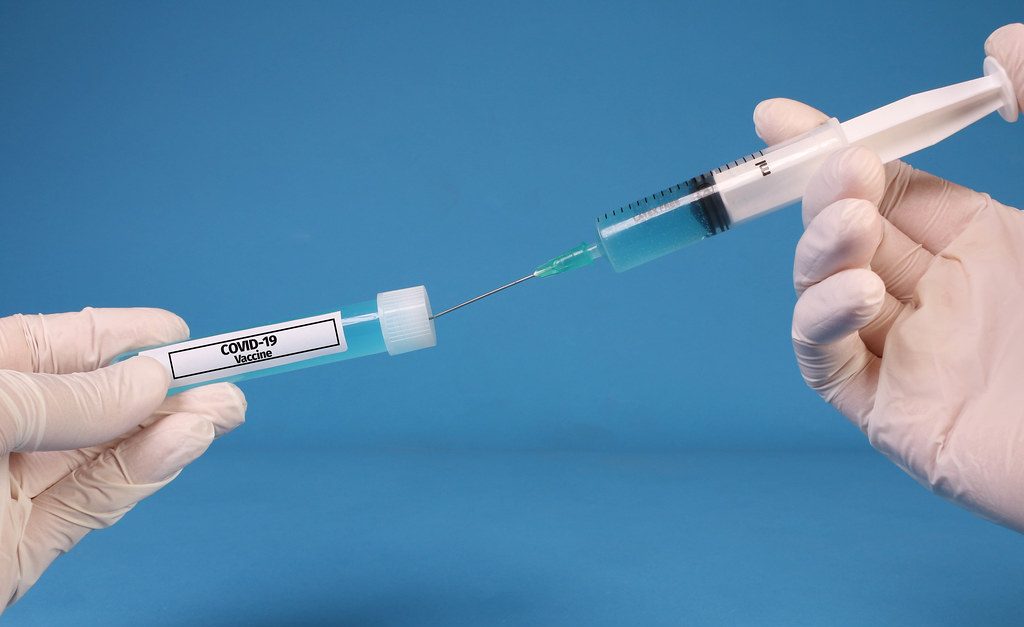
Sci and Tech writer Emily Adams explains a new vaccine against COVID-19 that aims to provide a different type of immunity than current vaccines.
By now everyone has heard of the main COVID-19 vaccines, with Pfizer, AstraZeneca and Moderna becoming well-known names. But this month Emergex, an Oxford-based company, has received approval to begin clinical trials for a new T-cell vaccine starting in January 2022. Trials at the University of Lausanne in Switzerland will test the skin-patch vaccine in both high and low doses in 26 human participants. The first wave of results is expected at an interval in June 2022.
How do current vaccines work?
Most people in the UK have been immunised with Pfizer, AstraZeneca or Moderna vaccines. But how do these current vaccines work, and how is this different from the T-Cell approach?
AstraZeneca is a traditional vaccine, using a modified version of a common cold virus, adenovirus, that expresses spike proteins to trigger the body’s immune response to produce neutralising anti-bodies against the COVID-19 virus.
In mRNA vaccines, such as Pfizer and Moderna, the individual is injected with a lab-generated mRNA that teaches body cells to produce ‘spike proteins’. These spike proteins are what give the coronavirus its now infamous appearance and are displayed by the body’s own cells. The immune system recognises the proteins as ‘foreign’ and produces anti-bodies to fight the perceived infection as it would when encountering an actual COVID-19 virus.
These vaccines generate a T-cell response, but to a lesser degree than the proposed Emergex vaccine.
“The Emergex vaccine aims to prime T-cells to rapidly eliminate COVID-19
How does the T-cell vaccine work?
The approval comes following a paper published in Nature revealing T-cells are involved in ‘abortive infection.’ This is the process of clearing coronaviruses from the body before the infection is even detectable by PCR or antibody tests. Rapid destruction of invading viruses by T-cells could explain stories many of us have heard of whole households becoming infected with the COVID-19 virus, apart from one or two individuals who test negative despite definite exposure.
The Emergex vaccine aims to prime T-cells to rapidly eliminate COVID-19 in this way. Whereas antibodies stick to the virus and prevent entry into human cells (known as neutralisation), T-cells hunt down and kill infected cells. This is the first vaccine approved for clinical trials which does not elicit an antibody response.
What are the advantages of a T-cell vaccine?
If successful, the Emergex vaccine could overcome many of the problems associated with current mRNA and traditional COVID-19 vaccines. One of the main benefits would be long-term immunisation in the absence of booster jabs.
mRNA vaccines stimulate anti-body production as the primary defence against SARS-CoV-2, the COVID-19 virus. However, antibody responses diminish with time, a phenomena explaining why we need booster jabs. The T-cell Emergex vaccine “could offer longer-lasting immunity – possibly for decades”, according to Robin Cohen, the chief commercial officer of Emergex.
SARS-CoV-2 has mutated a number of times since the pandemic began, producing what are commonly known as ‘variants’ of the virus. These variants pose a problem for vaccination efforts as the virus evolves to become more transmissible and less sensitive to vaccine-induced immune responses. A review of SARS-CoV-2 variants published in Nature in June 2021 outlined changes in antigenicity – the ability of the virus to be recognised by the body’s antibody defence system. The review cited evidence that the post-vaccine antibody immune response had a reduced impact at neutralising new variants of the COVID-19 virus. This is one of the hurdles that Emergex is hoping to overcome.
‘Antibodies are very sensitive to mutations while T-cells can see many other parts of the virus. Maybe that’s a selling point for T-cell vaccines,’ says Danny Altmann, a professor of immunology at Imperial College London.
From a practical perspective, the Emergex vaccine can survive for up to three months at room temperature, unlike currently used vaccines requiring specific conditions and refrigeration.
“Delivered within seconds via microneedles on a small patch
How is the Emergex vaccine administered?
If you are someone who is put off by needle injections, the new route of administration proposed for this vaccine may add to the list of benefits. Gold particles will be covered with small fragments of proteins, that induce the T-Cell response. These will be delivered within seconds via microneedles on a small patch that is placed on the skin.
Despite the wealth of benefits boasted by this new vaccine, Altmann suggests a mixed approach with different types of vaccine given with each shot. He emphasises the role of the T-cell vaccine as being complementary to current mRNA and traditional approaches, which already are showing positive effects on national and global immunisation.
Following the rapid development of the initial stages of COVID-19 vaccines, the normal length of vaccine development will resume in this post-emergency period. The earliest we can hope to see the Emergex vaccine available to the public is 2025.
Enjoyed this article? Find more from Sci&Tech below!
The Reality of Hymen Repair Surgery in the U.K
Feed Your Brain: Processed Foods Cause Memory Deficits in Aged Rats
Comments